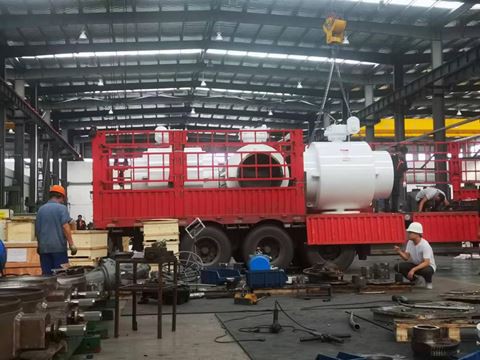We rely on valves to stop and seal the flow of media in its various forms: solids, liquids, and gases. Leakage of solids or liquids is relatively easy to spot, but some gas leakage isn't something that can be detected by the naked eye.
Cu ajutorul testării, suntem conștienți de eșecul unei supape de a opri suficient evacuarea gazelor. Cu aceste cunoștințe, ne putem îmbunătăți procesele prin modernizarea supapelor cu probleme.

Importanța organizațiilor de standarde de testare
Standardele de calitate pentru testele de supape și garnituri sunt stabilite de organizații din industrie, cum ar fi ANSI, API, ISO, MESC și TA-LUFT.
Today, we'll focus on API pressure testing standards. The American Petroleum Institute (API) was founded in 1919 after World War I. The war raised awareness of the vital role the petroleum industry holds in the United States, so the API was formed to bolster and secure domestic oil and gas production. Over 700 API standards have been put in place to promote efficiency, sustainability, and safety for both operations and the environment.
3 tipuri de testare a supapelor API
· API 622 – Tests process valve packing for levels of fugitive emissions.
· API 624 – Tests rising stem valves equipped with graphite packing for any fugitive emissions.
· API 641 – Tests quarter-turn valves for levels of fugitive emissions.
Because API 622 is the first in the series of embedded low E valve and packing standards, it's what we'll cover today. For valves tested at API 641, packing must first qualify for the API 622 test. Also, for the packing used in an API 624 test, the valve must have been tested with API 622 first.
De ce sunt necesare testele de emisii fugitive?
Depending on what is leaked, fugitive emissions can be costly. There is concern surrounding methane gas emissions because this gas is flammable, considered to be harmful to the environment, and is a commodity. Not only is fugitive methane emission an environmental concern, but it's also a financial loss when seeping valuable methane or incurring costly governmental fines.
With valves being to blame for over 50 percent of fugitive emissions, they are the main focus for testing. The Consiliul de Apărare a Resurselor Naturale estimates that leak monitoring and repair could potentially account for 18 percent of methane emission reduction. When plant operations call for fugitive emissions monitoring, LDAR (leak detection and repair) is typically part of a monthly testing protocol.
Vestea bună este că, pe măsură ce producția de gaze naturale a crescut, emisiile din această producție continuă să scadă. Aceste îmbunătățiri se datorează acțiunii voluntare, respectării reglementărilor sau ambelor. Progresele tehnologice, împreună cu testarea îmbunătățită, reprezintă modul în care continuăm să atenuăm emisiile fugitive.
Test de performanță API 622
API 622 has three iterations. The first was established in 2006, the second in 2011, and the latest in 2018.
Această ediție cea mai recentă limitează și mai mult scurgerea emisiilor prin scăderea numărului la 100 de părți per milion volumetrice (ppmv) și, de asemenea, elimină permisiunea de reglare a șurubului presetupei. Pe lângă ambalajul de 1/4 inch (ca parte a versiunilor de testare anterioare), a treia ediție implică un test de probă de ambalare de 1/8 inch. Aceasta remediază o problemă cu iterațiile testelor anterioare.
API 622 este în principiu un test de performanță. Următoarele explică punctele slabe pentru care testele supapelor le verifică.
Emisii fugitive
For the purpose of leak detection, the fugitive emission test for API 622 is not a pass/fail test. It's a 6-day stress test to see how many thermal cycles the valve can take before emissions exceed a certain threshold (previously 500 ppm and now 100 ppm).
Testarea este un proces de 6 zile care se ridică la 1500 de cicluri. Deoarece gazul metan este utilizat pentru această testare, cel mai bine este ca această procedură să aibă loc în aer liber. În fiecare zi, supapa este testată la 150 de cicluri la temperatura ambiantă, apoi pentru alte 150 de cicluri la 500 de grade F. Componentele se răcesc peste noapte pentru o altă zi de testare. Dacă până în ziua a cincea supapa rezistă, aceasta are proba finală în ziua a șasea, cu cicluri de temperatură ambientală crescute cu 10.
Pentru ca acest test să se dovedească cu succes, scurgerea nu poate depăși 100 ppm și, spre deosebire de versiunile anterioare ale acestui test, glanda nu poate fi reajustată pentru a corecta scurgerea.
Testarea coroziunii
La fel ca și testul de emisii fugitive, nici acesta nu este o evaluare de promovare/eșec. Monitorizează dacă metalul se înțeapă pentru a observa cât de bine se lipește garnitura de tulpină. De asemenea, evaluează calitatea generală a ambalajului.
Această testare a metalelor implică înmuierea și comprimarea ambalajului cu 30,000 megapascali. Acest ambalaj este apoi înfășurat în jurul metalului. Pot fi testate diferite tije de supapă în funcție de diferitele metale implicate.
Sănătatea materială
Spre deosebire de testarea emisiilor fugitive și corozive, testarea sănătății materialelor este de succes/eșec. Acesta examinează proprietățile materialelor ambalajului, inclusiv conținutul de lubrifiere, conținutul de politetrafluoretilenă, leșierea chimică, plus greutatea și densitatea.
Pentru această componentă a testării, standardele pentru supape nu sunt îndeplinite dacă:
· The graphite foil loses an excess of 15 percent of its weight at a temperature of 1000 degree F
· Graded packing loses more than 50 percent of its weight.
Obținerea sigiliului de certificare API este un proces complex și minuțios, dar ne oferă în industrie liniștea sufletească că supapele pe care le folosim sunt eficiente pentru a minimiza emisiile fugitive.